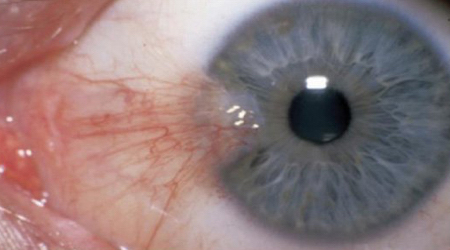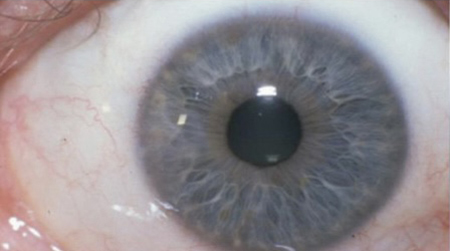How to Detect and Treat this Common Cornea Condition
You don’t have to be a surfer to suffer from surfer’s eye. A pterygium is a raised, pink, fleshy growth of the conjunctiva (the membrane that covers the front of the eye) that extends over the cornea. While not cancerous, a pterygium can irritate the eye and cause vision problems, so it’s best to treat the condition when it’s first noticed.

Why is pterygium called surfer’s eye?
Pterygium, pronounced tur-IJ-ium, is a weird looking word, so it’s often referred to as surfer’s eye. Why? It all comes down to the common causes: lots of exposure to ultraviolet sunlight, dry eyes, and irritants like dust, wind, and salt. You can see why surfers might be more prone to pterygium, but it can affect anyone. It’s particularly prevalent in males between ages 20-40, but again, the condition can appear on anyone who lives in a sunny place or spends a lot of time outdoors.
Symptoms of Pterygium
You may have a pterygium on one or both eyes if you exhibit any of these signs or symptoms commonly associated with surfer’s eye:
- A small growth in either corner of the eye, but most often on the side nearest the nose, growing toward the pupil. This can start out as a related condition called pinguecula, which is a yellowish patch or bump on the conjunctiva.
- If the growth expands over the eye, you may experience decreased, blurry, or distorted vision.
- A pterygium can also cause irritation, like redness, burning, or grittiness – the sensation that something like sand is caught in your eye.
- Your eye can appear red or swollen.
If you think you may have a pterygium or are experiencing any of these symptoms, don’t hesitate to make an appointment for a free consultation with Dr. Silk.
Talk to an eye doctor about pterygium
How to Treat a Pterygium


In many mild cases, pterygium symptoms can be controlled with over-the-counter lubricant eye drops or artificial tears. Steroid eye drops might also be prescribed to ease redness, itching, or swelling. However, if these symptoms persist, your eye doctor might recommend a simple surgery to correct the pterygium.
Surgery is generally recommended if other treatments have failed and the pterygium interferes with your vision or disrupts your daily life. The procedure typically takes around a half hour and you’ll need to wear an eye patch for a day or two. Most patients return to normal activities within that same week. Specialty eye drops will likely be prescribed, which help heal the eye and prevent a new pterygium from growing back.

Is there anything you can do to prevent pterygium?
Yes! Dr. Silk recommends wearing sunglasses every day, even when the sky is overcast or cloudy. Clouds might block some of the sun’s light, but they don’t stop ultraviolet (UV) light. Sunglasses that wrap around the eye (offering protection to the sides, not just the front) are best. These will help block irritants like dust, too. Also, use eye drops to prevent your eyes from becoming too dry.
Your conjunctiva (the clear membrane over the white of the eye that extends to the inner surface of the eyelid) should be clear, thin, and comfortable.
If redness, discomfort, or a fleshy mass appears, see an ophthalmologist!











.png)
